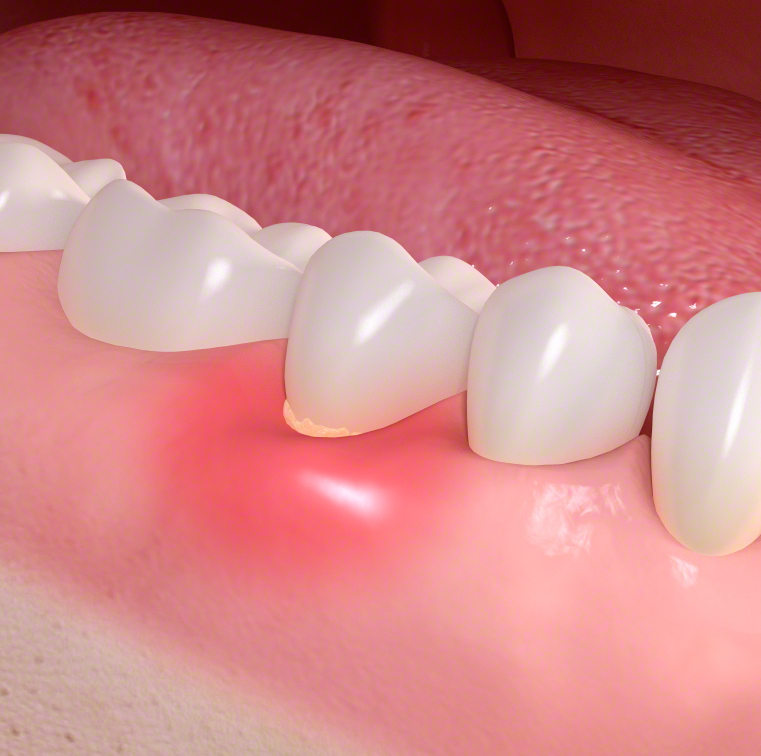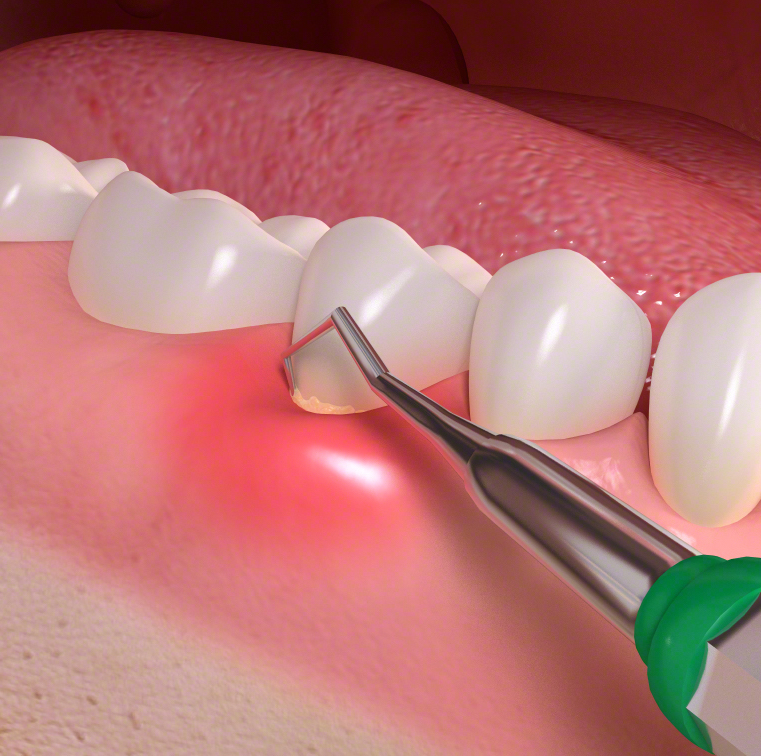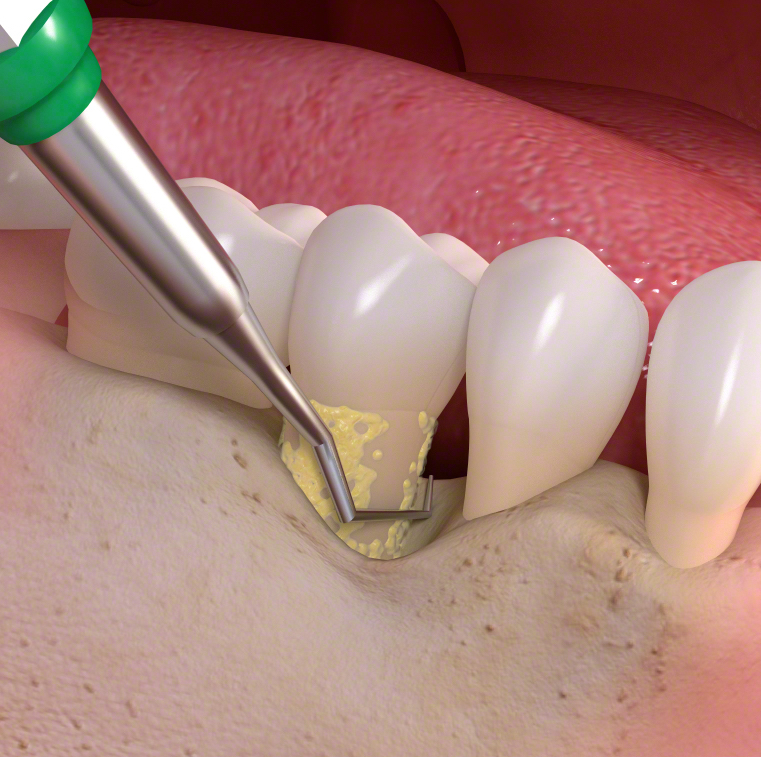Advanced Treatments
When non-surgical treatments can’t adequately control periodontal disease, then surgery may be your best treatment option. We offer several advanced treatments, some of which are outlined below, that we customize based on your specific needs. Call us to book an appointment today to assess your periodontal disease and provide the treatment that’s right for you.

Infected gum with tartar buildup

Removal of the infection

Tartar buildup and bone loss
Pocket Reduction Procedure
Periodontal diseases generally start between the teeth and can create a rough bone surface. When this happens, the gum cannot follow the bone shape where it’s uneven, resulting in persistently deep pockets. Pocket reduction is a process that will smooth the bone to create a shape that is favorable for the gums to rest on, thereby reducing the pocket and keeping periodontal disease at bay.. After the procedure, plan on at least one postoperative visit to check healing and remove sutures.
Regeneration Procedure
Regeneration procedure (bone grafting) is a process that involves the growth of new bone. Only certain shapes of bone loss can be treated with regeneration. Contact us to determine if you are a candidate for regeneration surgery.
Flap Debridement
Flap debridement is the process of visualizing the tooth root by gently and temporarily pushing the gums back to remove the tartar that could not be reached during scaling. The gums are then returned to position and closed between the teeth with sutures. After the procedure, plan on at least one postoperative visit to check healing and remove sutures.
Risk factors for gingivitis and periodontal disease
Gingivitis is caused by an excess of plaque bacteria on the teeth. When plaque hardens and forms tartar, the bacteria within it turn the immune system on to fight the infection.. While gingivitis can be treated if caught early on, gingivitis can easily develop into periodontitis and result in bone loss if left untreated. Find out if you’re at risk!